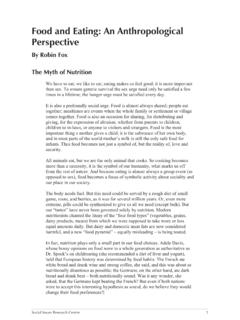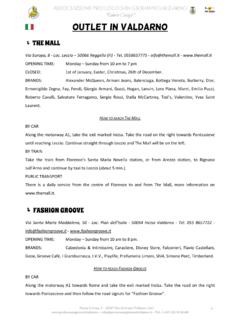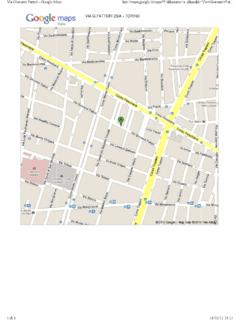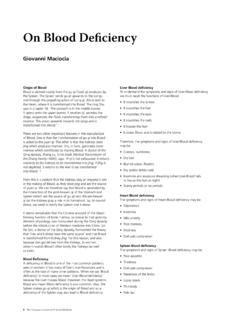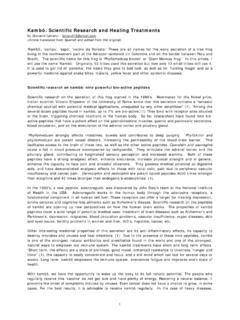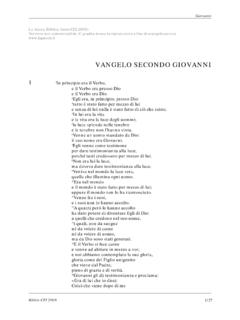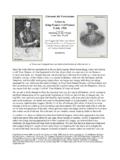Transcription of S I R C
1 Football violence in EuropeA report to the Amsterdam Groupprepared byGiovanni Carnibella, Anne Fox, Kate FoxJoe McCann, James Marsh, Peter MarshJuly ISSUESRESEARCHCENTRECONTENTSE xecutive Summary .. Introduction.. History .. Theory and research perspectives .. Cross-national variations.. Media coverage.. Racism .. Alcohol and football violence .. Tackling football violence.. Future directions .. 111 Introduction .. of the report .. 162 Football violence in history .. origins .. the game .. of thenewgame .. to the working class .. new disorder .. new disorder .. between the wars .. new hooligans .. in Europe.
2 Examples of violent incidents in Britain to 1960 .. examples of violent incidents in Europe .. 313 Theoretical and research perspectives .. report .. report .. Taylor .. theories .. Amplification .. approach.. Leicester School.. approaches .. approaches? .. European approaches .. 19961 Football violencein Other European research .. Conclusions.. 584 Cross-national variations in football violence in Europe .. of violence .. The Czech Czech profiles and behaviour .. The .. 845 Media coverage of football hooliganism.
3 Role of the media in other European countries .. The .. 986 Racism and football fans .. 100 SIRCJuly 19962 Football violencein of Racism .. initiatives .. European dimension.. 1077 Football violence and alcohol.. alcohol- violence connection .. and alcohol .. about alcohol .. police view.. consequences of alcohol bans .. case of the Scots.. new research direction? .. 1158 Tackling football violence .. football hooliganism .. The undercover Hooligan Charges and Containment and Police Inside the Police tactics at The decline of the away The Training of Closed-circuit Television (CCTV) and hand-held cameras.
4 The The 1985: Bradford & The Football Spectators Act (1989).. The Football Licensing Identity card and membership The Taylor The interim The final All-seater European The Claudia Roth report and The European Police and technology: Euro National Crime Intelligence Service Football Police National Coordinating Match Commander Senior Investigating Officers 19963 Football violencein IT Press and Media EPI-Centre system and Hooligan European Fan projects .. der Fan-ProjekteandKoodinationstelle Euro The directions in tackling football hooliganism .. 1319 Selected Bibliography.
5 133 SIRCJuly 19964 Football violencein EuropeContentsExecutive report contains an up-to-date review of research and theoreticalapproaches to football violence in Europe. The historicaldevelopment of the problems in various countries is attention is given to the role of the media, the emergence ofovert racism at football matches and the alleged influence of alcoholconsumption on violent behaviour. The content of each section ofthe report is summarised game of football has been associated with violence since itsbeginnings in 13thcentury football matches involved hundreds of players, and wereessentially pitched battles between the young men of rival villagesand towns - often used as opportunities to settle old feuds, personalarguments and land of folk-football existed in other European countries (suchas the GermanKnappenand Florentinecalcio in costume), but theroots of modern football are in these violent English much more disciplined game introduced to continental Europein 1900s was the reformed pastime of the British aristocracy.
6 OtherEuropean countries adopted this form of the game, associated withVictorian values of fair-play and retrained enthusiasm. Only twoperiods in British history have been relatively free offootball-related violence: the inter-war years and the decadefollowing the Second World behaviour now known as football hooliganism originated inEngland in the early 1960s, and has been linked with the televisingof matches (and of pitch-invasions, riots etc.) and with the reclaiming of the game by the working other European countries, similar patterns of behaviour emergedabout 10 years later, in the early 1970s. Some researchers argue thata similar proletarianisation of the game was involved, but there islittle consensus on this issue, and much disagreement on the extentto which continental youth were influenced by British andresearchperspectivesThe major research and theoretical perspectives on footballhooliganism derive mainly from British work conducted since thelate 1960s.
7 The principal sociological, psychological andanthropological approaches are critically reviewed including thoseof Ian Taylor, John Clarke, Stuart Hall, Peter Marsh, John Williamsand his colleagues, Gary Armstrong, Richard Giulianotti ResearchJuly 19965 Football violencein EuropeExecutive summaryThere are deep divisions within social science circles concerningexplanations of football hooliganism, with often vitriolic debatebeween Marxist sociologists, so-called figurationalists , socialpsychologists and more empirically oriented researchers. Thisatmosphere has hindered the emergence of truly is generally agreed that British football hooliganism has probablybeen over-researched.
8 Despite a general decline in violence atBritish football matches, the phenomenon still attracts adisproportionate amount of research in other European countries has grown in scale since theearly 1980s. The work of German, Dutch and Italian socialscientists is reviewed. Much of this research has taken Britishtheoretical perspectives as a starting point, although more local approaches are now evident in some increase in work in these countries has led to a more Europe-wide approach to the problems of football violence, with a numberof collaborative programmes now underway. The level ofcross-cultural variation in the patterns of behaviour of football fans,however, presents a number of problems for this kind of is suggested that the focus purely on behaviour at football gamesin Europe may be too limiting.
9 The subject might be betterconsidered in the context of the more general rise in juvenile crimeand delinquency in many countries and the emergence of newdeviant Cross-nationalvariationsThere has been no systematic recording of football-related violentincidents in any European country. The lack of quantitative orreliable empirical data on football-related violence, and particularlythe lack of comparable data, makes assessment of the variations andsimilarities between European countries very difficult, but somegeneral conclusions can be drawn from the available is clear that some form of disorderly behaviour has occurred invirtually every country in which football is played.
10 Disorder ofsome kind appears to be a near-universal and seemingly inevitableaccompaniment to the disorder is not, however, necessarily of the samenature, or influenced by the same causal factors, in all of thecultures in which it occurs. Even the most dogmatic academics havecome to admit that universal explanations cannot accommodate allcross-cultural the extent and the nature of football-related violence areinfluenced by different historical, social, economic, political andcultural factors in different European countries. Social class hasbeen a significant factor in England, for example, religioussectarianism in Scotland and Northern Ireland, sub-nationalistpolitics in Spain, historical regional antagonisms in Italy, ResearchJuly 19966 Football violencein EuropeExecutive summaryThere are, however, significant cross-national similarities in the stages of development of the problem.

